Realism, which originated in France during the 1850s and later expanded to other nations including Russia and the United States, stood as a direct response to the prevailing Romanticism movement. While Romanticism glorified the past and nature, Realism took a different path by striving for a truthful representation of the subject matter. Realist painters sought to capture the world without embellishment, avoiding artificiality and supernatural elements. Their aim was to present a genuine depiction of reality, free from speculation or idealization.
In France, Gustave Courbet and Jean-François Millet emerged as leaders of the Realism movement. Their works captured the essence of everyday people and their struggles. In Russia, Ilya Repin became a prominent figure of Realism, using his art to shed light on social and political issues. Meanwhile, American Realism reached its peak in the mid-19th century, with influential artists such as Winslow Homer and Andrew Wyeth making significant contributions to the movement.
Here is our curated list of 10 most famous realist artists of all time:
Gustave Courbet
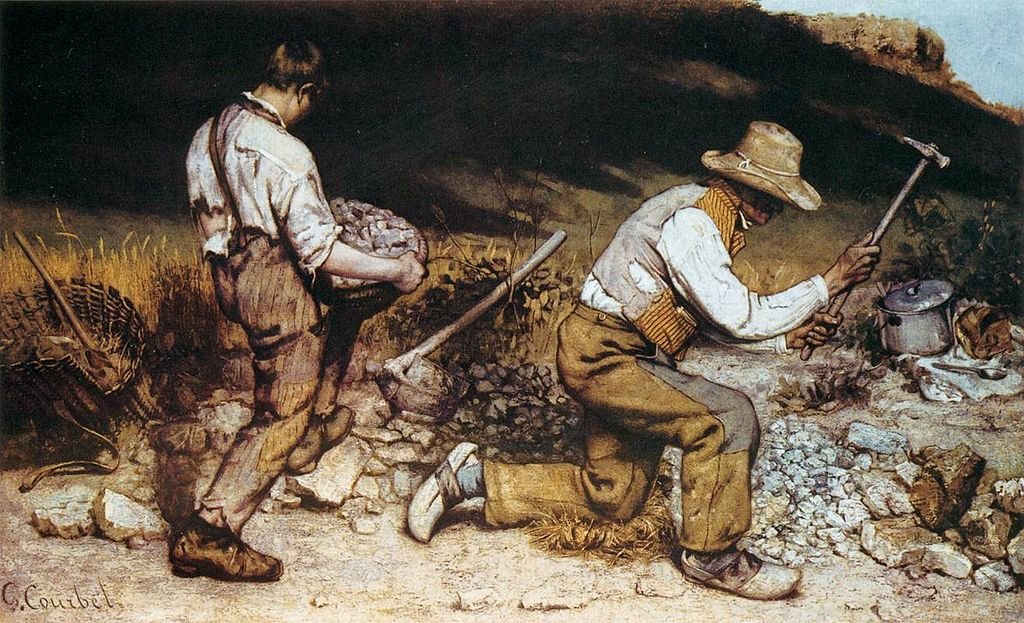
Jean Désiré Gustave Courbet, born on June 10, 1819, in Ornans, France, was a renowned French painter and a leading figure in the 19th-century Realism movement. Breaking away from academic conventions and the Romanticism of his predecessors, Courbet embraced a philosophy of painting only what he observed. Despite initially studying law in Paris, his true passion lay in art, and he devoted his time to studying the masterpieces displayed at the Louvre.
In 1844, at the age of 25, Courbet achieved recognition when his self-portrait, “Courbet with a Black Dog,” was accepted at the Salon. This marked the beginning of his artistic journey, which included notable works like “Burial at Ornans” (1849-50) and “The Stonebreakers” (1849). Through his paintings, Courbet defied conventions by portraying unidealized peasants and workers on a grand scale, challenging the traditional subjects reserved for religious or historical paintings.
While Courbet’s earlier works had political undertones, his later creations encompassed a wider range of subjects, such as landscapes, seascapes, hunting scenes, nudes, and still lifes. His revolutionary approach to Realism laid the groundwork for subsequent art movements, including Impressionism and Post-Impressionism.
Vasily Surikov

Vasily Ivanovich Surikov, born on January 24, 1848, was a renowned Russian Realist historical painter whose works continue to captivate audiences. His paintings have gained widespread recognition as illustrations of Russian history and culture. Surikov’s greatest achievements lie in his trilogy of paintings that depict Russia during the pre-Petrine era’s final stages: The Boyarynya Morozova, Menshikov at Beryozovo, and The Morning of the Execution of the Streltsy. Among these, The Boyarynya Morozova stands out as a pinnacle of Surikov’s artistic prowess, immersing the subject in vibrant colors.
To honor the centenary of his birth, Surikov’s Krasnoyarsk estate was transformed into a museum. The site features two memorials, erected in 1954 and 2002 respectively, paying homage to the artist’s legacy. In 1959, Mosfilm released a biographical film titled “Vasily Surikov,” scripted by Emil Braginsky and directed by Anatoly Rybakov. The film stars Yevgeni Lazarev as Surikov and Larisa Kadochnikova as Elisabeth, shedding light on the artist’s life and accomplishments.
Surikov’s enduring influence is evident in the various streets and squares named after him throughout Russia. Additionally, even a crater on Mercury bears his name, symbolizing the lasting impact of his artistic contributions.
Edouard Manet

Édouard Manet, a renowned French modernist painter of the 19th century, played a significant role in bridging the gap between Realism and Impressionism. Born on January 23, 1832, in Paris, France, and passing away on April 30, 1883, in the same city, Manet hailed from an affluent background. With a respected judge for a father and a mother from a noble lineage, he was fortunate in his upbringing.
From a young age, Manet nurtured an unwavering passion for art, fueled by his uncle’s support and inspired by his visits to the Louvre. Despite being born into an upper-class household with strong political ties, he defied expectations and turned away from a naval career, immersing himself in the captivating world of painting.
In 1845, he embarked on a transformative journey by enrolling in a drawing course, where he encountered like-minded art enthusiast Antonin Proust. Although his initial attempts to join the Navy were unsuccessful, Manet seized the opportunity to pursue an art education course under the mentorship of Thomas Couture.
His early masterpieces, such as The Luncheon on the Grass (Le déjeuner sur l’herbe) and Olympia, both created in 1863, stirred great controversy and became rallying points for the emerging generation of Impressionist painters. Manet’s profound influence and innovative approach solidified his position as a pivotal figure in the evolution of art, leaving an indelible mark on the trajectory of Realism and the birth of Impressionism.
Winslow Homer

Winslow Homer, born on February 24, 1836, in Boston, Massachusetts, and passing away on September 29, 1910, in Prouts Neck, Maine, is hailed as one of the greatest landscape artists in history. His profound talent captured the essence of American life, particularly in coastal regions, with a particular emphasis on the mesmerizing beauty of the ocean.
While Homer’s paintings may appear deceptively simple, they delve into the depths of human struggle in the face of an indifferent universe. His artistic journey was nurtured by his mother, herself an amateur painter. At the age of 19, Homer embarked on an apprenticeship with lithographic form artist John Bufford in Boston, primarily focusing on copying the designs of other artists.
Within a remarkably short period, he honed his skills and began producing exceptional oil paintings. While his mother endeavored to secure funds for his European study, Harper’s Magazine redirected his path, sending him to the front lines of the American Civil War (1861-1865) to capture the realities of battle scenes and camp life through sketches.
Homer’s initial sketches portrayed the camp, commanders, and the army of Union officer Major General George B. McClellan at the banks of the Potomac River in October 1861. Although these drawings received limited attention at the time, they marked a pivotal moment in Homer’s artistic growth, transitioning from an illustrator to a painter.
Working in the midst of danger, Homer’s studio became his refuge, where he could regain strength and refocus his artistic vision. He transformed his sketches into a series of powerful paintings of the Civil War, including notable works like Sharpshooter on Picket Duty (1862), Home, Sweet Home (1863), and Prisoners from the Front (1866). These artworks captured the heart-wrenching realities of war, evoking deep emotions and reflecting Homer’s mastery in portraying the human experience.
Ilya Repin

Ilya Yefimovich Repin, born on August 5, 1844, in Chuguev, Ukraine, was a Ukrainian-born Russian painter who rose to become one of the most esteemed realist artists of the 19th century in Russia. Renowned as a leading figure in the social realism art movement, Repin played a pivotal role in shaping the spirit of Russian Realism. Born into a humble family with a military background, Repin’s immense talent for drawing and painting emerged at an early age. At thirteen, his father enrolled him in the workshop of Ivan Bunakov, an icon painter, where he honed his skills by restoring old icons and painting portraits of local figures.
In October 1863, he sought admission to the Imperial Academy of Arts in Saint Petersburg. Though unsuccessful in his first attempt, he persevered, renting a small room in the city and enrolling in academic drawing courses. Finally, in January 1864, he gained admission to the academy without any fee and began attending classes under the guidance of his professor and mentor, Ivan Kramskoi.
Repin’s exceptional talent flourished, particularly in the realm of portrait painting. Throughout his career, he produced over three hundred portraits, capturing the essence of notable political figures, writers, and composers of his time.
Constantly in search of new techniques and subjects to imbue his works with greater depth and richness, Repin had a select group of favorite subjects and individuals whom he portrayed. Like many Russian realists of his time, he often drew inspiration from dramatic conflicts found in contemporary life and history. He skillfully brought these conflicts to life through his art, infusing his works with powerful narratives and emotional resonance. Through his unwavering dedication to portraying truth and his deep understanding of the human condition, Ilya Yefimovich Repin left an indelible mark on the world of art.
Jean-Francois Millet
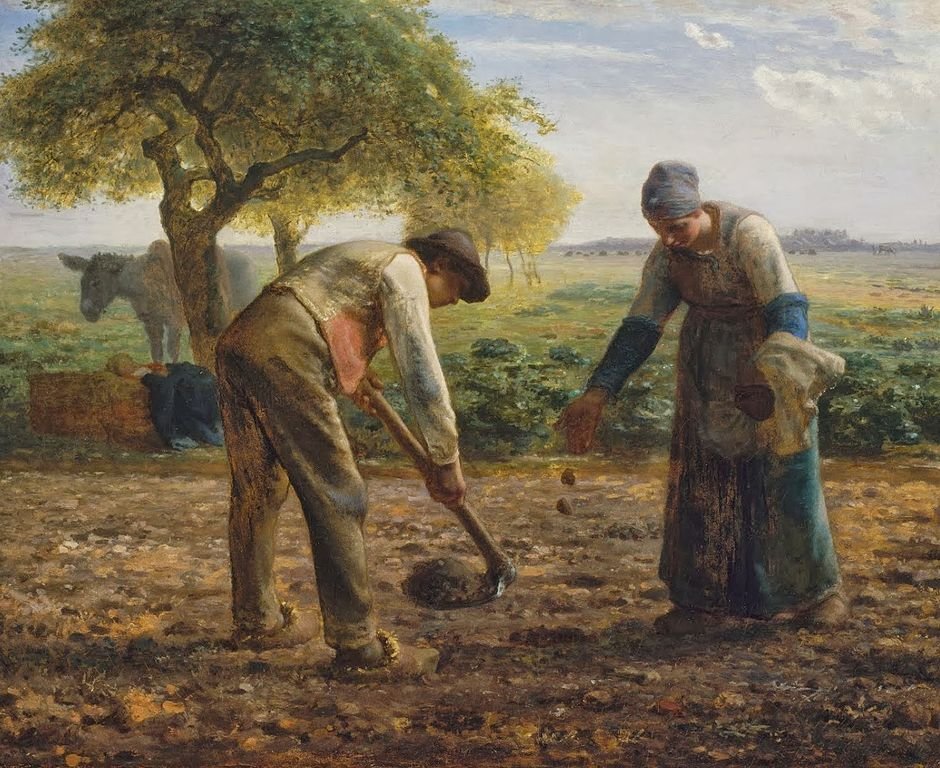
Jean-François Millet, a French artist and one of the pioneers of the Barbizon school in rural France, was born on October 4, 1814, in Greville-Hague, La Hague, France. He passed away on January 20, 1875, in Barbizon, France. Millet’s upbringing as a peasant farmer profoundly influenced his artistic style, placing him firmly within the Realism art movement.
In 1837, he ventured to Paris and enrolled at the Ecole des Beaux-Arts, studying under Paul Devaroche until 1839. It was in 1844 that he gained recognition for his remarkable painting, “The Milkmaid,” which was accepted at the Salon. Additionally, he created a large pastel work during the same period.
During the early 1850s, Millet focused extensively on portraying peasant subjects, as seen in notable works like “The Winnower” from 1848. Today, many of Millet’s significant paintings can be found in the Museum of Fine Arts in Boston, showcasing his deep exploration of the rural experience and capturing the essence of peasant life.
Rosa Bonheur
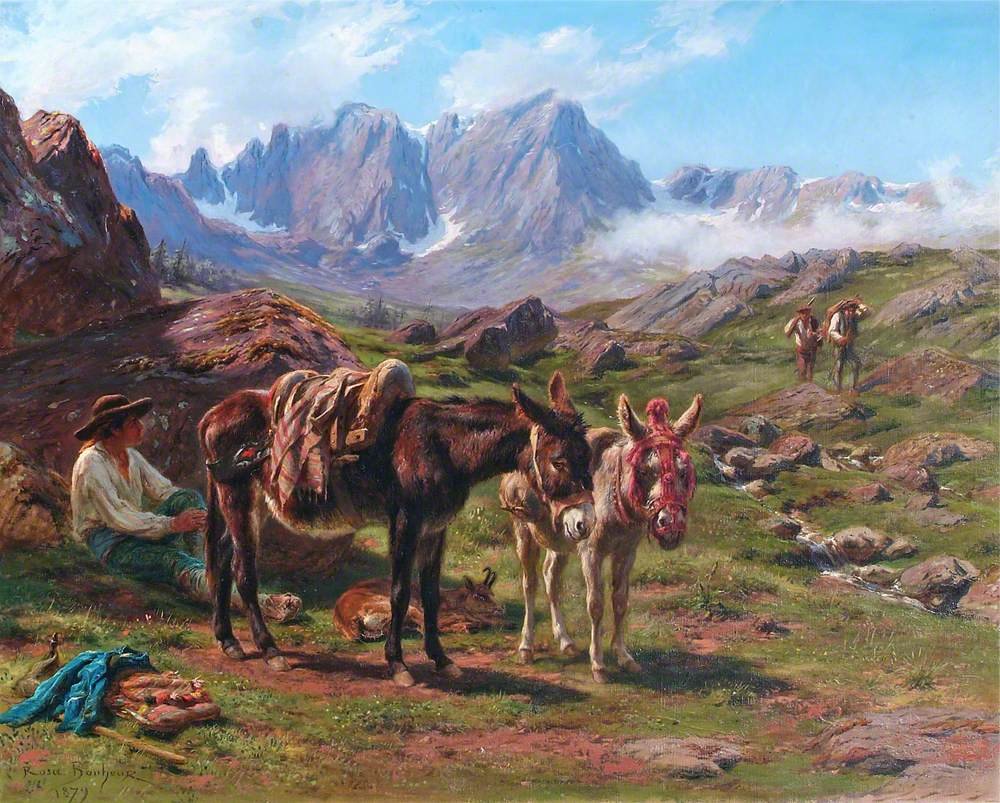
Rosa Bonheur, a renowned French realist painter, and sculptor, dedicated her artistic career to painting animals. In a time when women were often discouraged from pursuing artistic education, Bonheur’s remarkable success paved the way for future generations of women artists. Notably, she broke convention by donning men’s clothing, finding practicality in trousers for her work with animals.
Under the guidance of her father, a painter, and teacher specializing in portraits and landscapes, Bonheur received her artistic training. Her feminism reflected the spirit of the era, influenced by the post-French Revolution climate of enlightenment, freedom, and middle-class values. In 1894, she became the first woman to be awarded France’s Cross of the Legion of Honor, an attestation to her significant contributions to the art world.
One of Bonheur’s most notable works is “The Horse Fair,” created in 1852 and influenced by the work of Theodore Gericault. This masterpiece showcased her exceptional talent and solidified her reputation as an artist of great skill and vision. Rosa Bonheur’s legacy extends beyond her artistic accomplishments, as she played a crucial role in challenging gender norms and advocating for the recognition and empowerment of women in the art world.
Andrew Wyeth
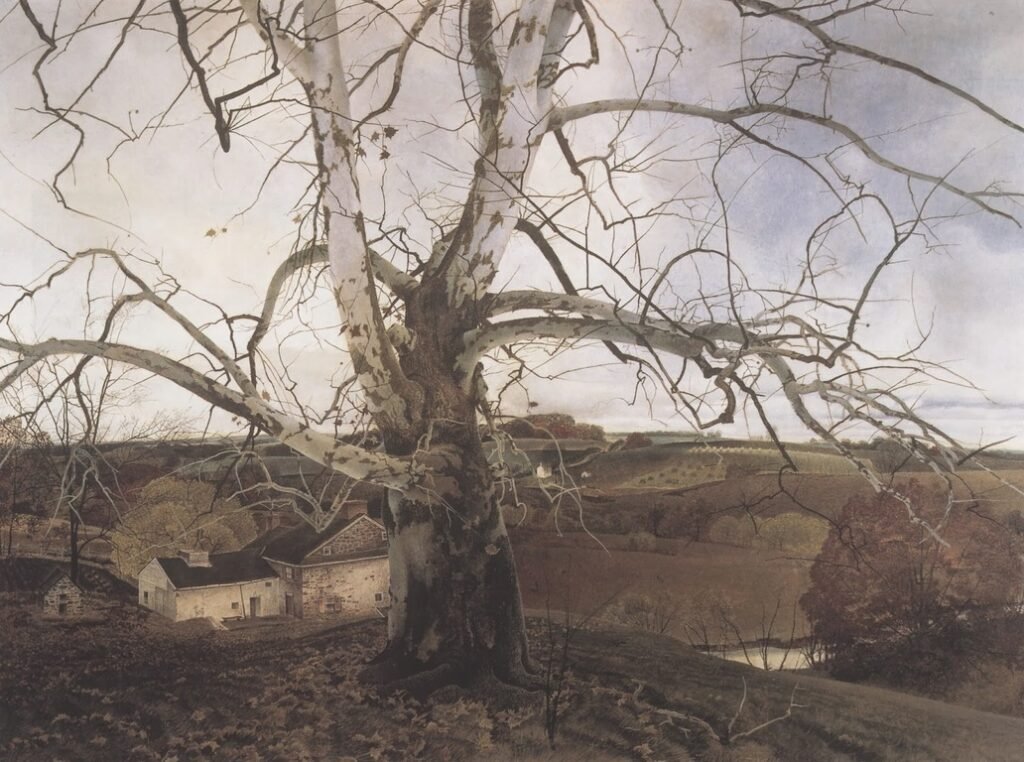
Andrew Wyeth, a highly acclaimed 20th-century American artist, gained recognition for his realistic and regionalist style. Born on July 12, 1917, in Chadds Ford Township, Pennsylvania, he left an indelible mark on the art world before his passing on January 16, 2009, in the same township.
The early stages of Andrew Wyeth’s artistic journey were profoundly shaped by his father. It was under his father’s guidance that the young Wyeth first delved into the realm of art, cultivating a deep appreciation for rural landscapes, artistic traditions, and a sense of romanticism. His father’s mentorship was crucial in nurturing Wyeth’s artistic talents and fostering his passion for the creative process.
In 1936, Wyeth had his first exhibition at the Art Alliance of Philadelphia, marking the beginning of his artistic career. However, it was his remarkable works showcased at the Macbeth Gallery in New York City in 1937 that truly captured his attention. Wyeth’s paintings possess a distinct linear quality, characterized by meticulous precision and detail that surpasses mere photographic realism.
William Glackens
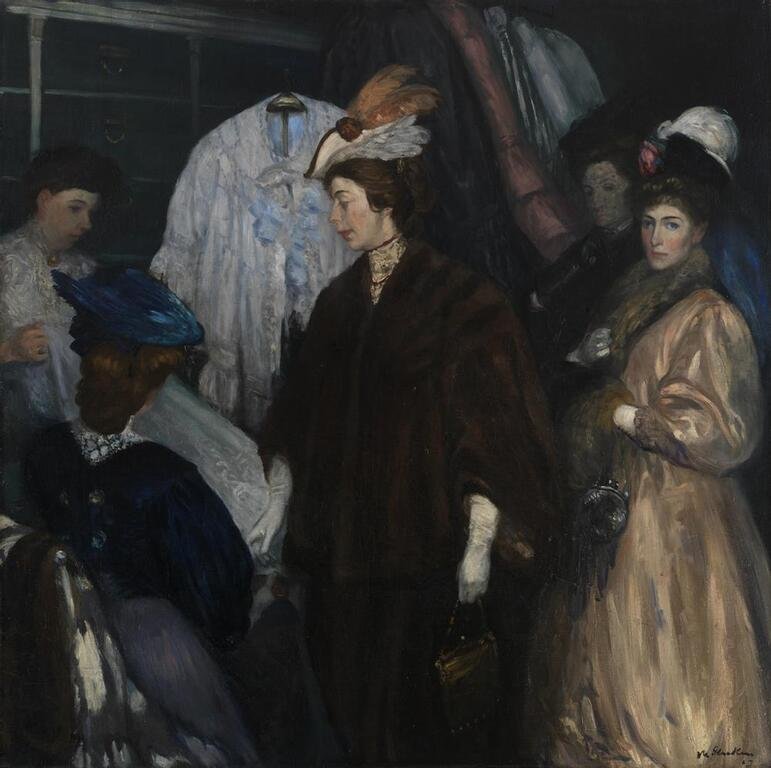
Chrysler Museum of Art, Norfolk, VA
Born on March 13, 1870, William James Glackens was a notable American realist painter and a founding member of the Ashcan School. This artistic movement challenged the traditional notions of beauty set by the conservative National Academy of Design. Glackens came from a well-established Philadelphia family, and he had two siblings, among them his brother Louis, who achieved recognition as a prominent cartoonist and illustrator.
From a young age, Glackens displayed a keen interest in drawing and drafting, showcasing a natural talent for the arts. In November 1891, Glackens embarked on his artistic journey by enrolling at the Pennsylvania Academy of the Fine Arts. It was during his time that his unique artistic style began to take shape. He became known for his vibrant use of color, depicting lively street scenes and capturing the essence of everyday life in pre-World War I New York, and Paris. These early works solidified his reputation as a significant artist.
As his career progressed, Glackens’ artistic palette evolved, embracing brighter tones and reflecting the strong influence of Renoir, the renowned French painter. Alongside his pursuits as a painter, Glackens also found success as an illustrator, contributing to newspapers and magazines in both Philadelphia and New York City. This dual creative endeavor allowed him to explore different facets of the art world and further expand his artistic expression.
Thomas Eakins

Born on July 25, 1844, in Philadelphia, Pennsylvania, Thomas Eakins was a prominent American artist, sculptor, photographer, and fine arts educator. Raised in an environment that cherished education, Eakins developed a profound passion for art. After graduating from Central High School in 1861, he dedicated himself to refining his artistic skills.
In 1862, Eakins enrolled in the esteemed Pennsylvania Academy of Fine Arts, immersing himself in the realms of drawing and anatomy. Seeking further artistic growth, he embarked on a transformative journey to Europe from 1866 to 1870, where he found inspiration amidst diverse cultural landscapes. In 1880, Eakins acquired a camera, which would significantly shape his artistic vision. Incorporating photography into his creative process, he produced notable works such as “Mending the Net” (1881) and “Arcadia” (1883).
Eakins’ commitment to anatomical precision and his pioneering use of photography became integral to his distinct artistic style. Among his notable achievements was the portrait of Professor Benjamin H. Brinton, a renowned Philadelphia hospital surgeon, completed in 1876. Additionally, with the support of his family, he created a portrait of the esteemed poet Walt Whitman in 1887-1888.
